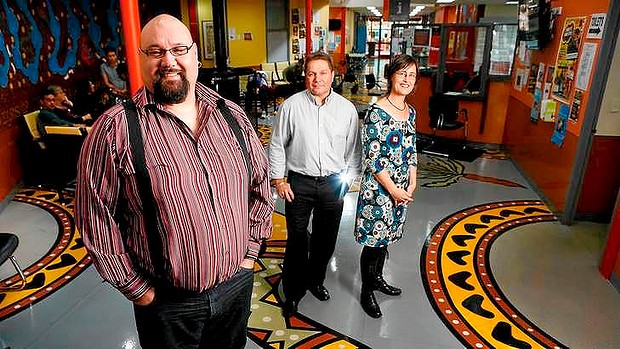
Victorian Aboriginal Health Service chief executive Jason King, clinical program manager Andrew Baker and medical director Mary Belfrage. Photo: Eddie Jim
Medicare was always a dogfight. It became law in the most extraordinary circumstances: one of a handful of bills passed during the only joint sitting of Federal Parliament in the nation’s history, after the double dissolution election in 1974.
As the Whitlam government prepared to introduce the system – then known as Medibank – its opponents rallied. The Australian Medical Association marshalled a million-dollar ”Freedom Fund”, donated by members. Determined to stop bureaucrats interfering with patients, it hired a former Miss Australia to front its publicity campaign. The General Practitioners’ Society of Australia circulated a poster depicting social security minister Bill Hayden dressed in Nazi uniform.
Dr Anne-marie Boxall, co-author of Making Medicare, says Whitlam had little support, even from within the Labor Party. The party platform advocated a fully nationalised model, along the lines of the British National Health System. By contrast, Whitlam’s plan was for a public insurance scheme. Health services would be delivered by a mix of public and private providers, paid for by taxpayers and guaranteed for everyone.
”The crucial members of his caucus didn’t agree with him, but he was adamant,” she says. ”He’d done a lot of thinking about it. So he waged the war of public opinion and he won. It’s an amazing political story.”
